






EDITOR IN CHIEF: HEATHER KOEPP
LAYOUT DESIGN: ELISE COATES
4 14 22 28 40 48 56 62
ARI ABDUL
Interview and Photos: Heather Koepp

KARIN ANN
Photographer: Yasmine Kateb Interview : Heather Koepp
MATTHEW LINDBLAD
Interview and Photos: Heather Koepp
BAILEY SPINN
Photo and Interview: Heather Koepp
Wardrobe Stylist: Molly Apple
Hair Stylist: Jinju
Makeup Artist: Kris Jung
DE’WAYNE
Photo and Interview: Heather Koepp
Men’s Grooming: Coree Moreno
Wardrobe Stylist: Damian Collins
GRAYSCALE
Interview and Photos: Heather Koepp
LA ROUX
Interview and Photos: Heather Koepp
BSB TV
Interview: Heather Koepp

Interview and Photos: Heather Koepp
By the time Ari Abdul hits the stage, something in her shifts.
“I get so anxious I dissociate,” she says, laughing. “And then I’m watching videos later like—wait, that’s me? Pouring water on myself? Crawling on stage? Who let her do that?”
That duality—part chaos, part control—is at the heart of her next chapter. Following the viral success of “BABYDOLL,” two moody and magnetic EPs (Fallen Angel and CCTV), and a run of globe-spanning tours, the alt-pop shapeshifter is stepping into what she calls her “crash out era”—a moment of clarity, catharsis, and creative abandon.
“No filter, no fiction—just real shit,” she says. “I’ve never been more certain of who I am.”
If you’ve followed Ari since her breakout, you already know the story: A bedroom pop experiment called “BABYDOLL” explodes on TikTok, launching her from complete anonymity into label meetings and studio sessions practically overnight.
“I’m literally always telling this story—and I’ll never shut up about it,” she grins. “I came from a total fangirl world. I didn’t know how to sing, didn’t even know I could. So for all this to happen? It still feels surreal.”
Sometimes that surreal feeling still catches up with her. “When I’m outside in LA, I have these moments where I stop and go, ‘How am I here?’ Like—I’m across the country, making music. That still blows my mind.”


But for all the momentum that viral debut brought, Ari is the first to admit that defining her sound has been a longer process. She describes her first two EPs—Fallen Angel and CCTV—as snapshots of a young artist figuring it out on the fly.
“Fallen Angel was pure emotion. I made it with my best friend who knows me better than anyone, so it felt real and vulnerable. Then CCTV was me experimenting. I was working with new producers, new writers—trying to find where I fit. And honestly, I had a bit of a sonic identity crisis.”
Despite her strong visual and lyrical presence, she struggled at first to align what she felt with what she sounded like. “I’ve always had a sense of who I am. But translating that into a consistent sound? That took time. CCTV felt more conceptual, even fictional at times.”
“Those EPs were part of the journey—but this next body of work? It’s all me.”
THE RISE OF “ALIVE”
“Alive,” her newest single and first release of the crash out era, arrives like a jolt to the system—dark, shimmering, and deeply alive. Clocking in at four minutes (her longest song to date), the track delivers on tension and release, pairing pulsing synths with emotionally raw lyricism.
“I had this line in my notes forever—‘eat me alive,’” she says. “That’s what feelings do to me. They keep me up at night. They swallow me whole. And I wanted to turn that into power. That’s what this song is about.” She wrote “Alive” while processing personal transformation—emotionally, artistically, even physically.
“I started releasing music when I was 20. Now I’m 23, turning 24. I feel like I’ve aged in the best way—like I’ve grown up so much. This song is about craving life. Letting it consume you. Letting it change you.”
The track also draws a deliberate line back to “You,” one of her earliest songs. “There’s this synth in ‘You’ that I loved—it’s dark, moody. ‘Alive’ is like the spiritual evolution of that. Bigger. Sharper. Bolder.”
And while the song’s production hits hard, the emotion runs deeper. “When I write music, I want it to be something people are too scared to say,” she adds. “That’s how I know it’s honest.”
Raised in Brooklyn with Hispanic and Middle Eastern roots, Ari grew up immersed in sonic contrast—metal riffs, reggaeton beats, hip-hop bass lines, classic rock melodies. It wasn’t just background noise. It became a philosophy.
“New York teaches you that you can mix anything,” she says. “I’ll hear a reggaeton song and be like, ‘I love that drum pattern.’ Then I’ll listen to a metal track and go, ‘Those vocals? I need them.’ Nothing’s off limits.”
That genre-agnostic mindset bleeds into everything she does, including the collaborators she brings into her world. Whether working with longtime friend Isabel LaRosa or viral alt-pop artist Jutes, the connection comes first.
“With Jutes, I heard his song ‘Sleepyhead’ on Reels, followed him, and he followed me back. We were just like, ‘You’re cool, no—you’re cool!’” she laughs. “Same with Isabel. We met when we were teenagers. It’s not just about music—it’s about trust. It’s family.”
In 2025, Ari Abdul hit the road for a 45-day U.S. tour supporting Nessa Barrett—her biggest run to date and a pivotal moment in her growth as an artist. Each night, she stepped on stage with nerves, adrenaline, and nothing to hide.
“I didn’t change anything about myself,” she says. “I just went out there as me. I have so much anxiety before shows, but once I step on stage, I dissociate. I become Ari Abdul. If it connects, it connects.”
The tour wasn’t just about the music—it was about learning how to live on the road. Rather than the usual hotel circuit, Ari and her crew spent the run in Airbnbs, sharing late-night meals, inside jokes, and the kind of creative energy that only comes from constant chaos. “We got close really fast,” she says. “It was very DIY and emotional and intense—but in the best way.”
























What’s most striking about Ari Abdul right now isn’t just her confidence—it’s her clarity. There’s a groundedness beneath the theatrics, a sense that she’s not chasing a version of herself anymore. She’s already living in it.
“This is the most certain I’ve ever felt,” she says. “Not just about the music, but the people I’m working with. The things I want to say. I’m not looking for a sound. I’m building a world.”
That world isn’t polished. It’s jagged, emotional, beautifully raw—and entirely her own. From the visuals to the live arrangements to the creative team around her, Ari’s finally made space for the kind of artist she always hoped she could become: one who leads with honesty and doesn’t shrink from discomfort.
“There’s this moment before I go on stage where I still think, ‘What if I’m not enough?’” she admits. “But then the lights hit, and it’s like—go time. You can’t fake that feeling. That’s when I know it’s working.”
Now, as she heads into her first headlining tour across the U.S.—armed with new songs, new stories, and a renewed sense of self—Ari isn’t trying to prove anything. She’s just ready to crash through.
“I always used to say, ‘This is the year I figured it out.’ But this time? I mean it.” She pauses, smiling like someone who’s just seen the future.
“And I’ve still got a year and a half before my frontal lobe finishes developing… so who knows what’s next.”


When Karin Ann speaks, there’s no performance, no filter— just truth. Whether she’s joking about crocheting one minute and throwing knives the next, or peeling back the layers of selfdoubt, artistry, and survival, the Slovak-born singer-songwriter is refreshingly, unflinchingly herself. And in a world that often demands artists be one thing, her refusal to choose—between softness and rebellion, chaos and control—feels like a quiet revolution.
Her debut album, Through the Telescope, wasn’t just an introduction; it was an excavation. “It feels like a mosaic,” she explains. “Little glass pieces from different moments in my life. I don’t know who I’d be without that version of myself.” While she now admits to nitpicking the production or lyrics, there’s no disowning it.
“I’m still proud of it. It was the first thing I ever put out that I really loved.”
That sense of self-possession is something Karin’s fought hard to earn. Growing up in Slovakia, she didn’t always feel safe to be herself—queer, creative, loud, colorful. And while some of her peers have chosen more traditional paths, she’s found her own version of fulfillment outside those lines. “I just think people should be allowed to live however they want—as long as they’re not hurting anyone,” she says.

“What doesn’t affect you, doesn’t affect you. Let people exist in the way that makes them feel most like themselves.”
That freedom threads through her music, which has found listeners far beyond her hometown. And while Slovakia may not have always embraced her, she believes things are slowly shifting. “People are beginning to understand that there isn’t just one right way to live or think,” she says. “There’s still a long way to go, but it gives me hope.”


“Growing up in Slovakia, it was hard being who I am—being queer, being different, gravitating toward things that didn’t fit what was expected of me,” Karin says. “It didn’t always feel like a safe place to express myself fully.” Even now, she knows that not everyone back home will understand or accept her work— but she’s learned to see that as part of the mission. “The more time I spend away, the more love I have for where I’m from,” she says. “When I was growing up, I wish I had somebody like me to look up to. So if even one person back home finds my music and thinks, ‘She’s doing it, so maybe I can too,’ that means everything. It reminds me why I do this.”
Karin’s next move? A bold reimagining of David Bowie’s “Heroes”—recorded with members of Bowie’s own band and produced by his longtime collaborator, Mark Plati. “At first I was terrified. I love the original so much I didn’t want to touch it,” she says. “But Mark told me, based on what he knew of Bowie, he thought

he’d like my version. That gave me the push I needed.” It’s set to drop just in time for Pride Month.
Bowie aside, Karin is kneedeep in other explorations— journaling poetry for the first time since third grade, finding joy in offbeat hobbies like knife throwing and crocheting, and reconnecting with a younger, more essential version of herself. “When music became my job, I realized I had no hobbies anymore. So I started doing weird stuff. I needed something to turn my brain off,” she laughs. “Throwing knives is… weirdly peaceful?”
Beneath the playful chaos is a deeper shift: a commitment to gentleness, presence, and genuine selflove. “I used to drop something and say, ‘you dumb fucking bitch’ to myself. For what? I’m the only one I’ve got. I need to have my own back.” That awareness bleeds into her art. She’s less concerned now with chasing industry timelines or virality and more focused on making work that feels intentional. “We’re not machines. Especially as an independent artist, I can’t put out a single every month. It’s unsustainable. I’d rather give people something real than just something fast.”
She’s learned that lesson the hard way. After pushing herself too far—mentally, emotionally, physically—she hit a breaking point at just 20 years old. “I couldn’t walk for months. Not from an accident or illness—just burnout. That’s when I decided I’m never sacrificing my health again. No deadline, no algorithm, no viral moment is worth that.”
Karin speaks with the insight of someone who’s done the work, not just in the studio, but in her own mind. “I used to feel like, ‘If I die tomorrow, who cares?’ Now, I’m scared to die. And that’s a good thing. It means I want to be here.” She credits that shift to slowing down, reconnecting with nature, and building daily rituals—like writing poems about Echo Park geese or naming five things she likes about herself and the world each morning. “I never realized how much it would impact my creativity, but it has. Being kinder to myself makes me a better artist.”







One of her most grounding moments came full circle in the most unexpected way. In 2019, she attended a concert in Prague. At the time, she was just another face in the crowd—one of only two people singing along to the opening act. A few years later, she returned to that same venue, this time as the headliner. “Right in the front row, dead center, was that same person,” she recalls. “We were both sobbing. I said, ‘I know you.’ And they remembered me, too. We were just two fans back then, and now I’m the one on stage. That was wild.”
Today, Karin is still building—not just a discography, but a life. One filled with community, purpose, creativity, and a little more peace than before. She’s not rushing to figure it all out. “I’m about to be 23. I don’t need to have everything solved right now. I’m learning to just exist in a state that’s more at peace—with myself, with the world, with not knowing.”
She isn’t chasing trends or crafting viral bait. She’s making art that might help someone else feel a little less alone—and for Karin Ann, that’s the point. “I used to think you had to break away from something to become something. But now, I’m building. And for the first time, I’m actually excited to be alive.”

Interview and Photos: Heather Koepp
In an era when creative careers are increasingly fragmented, few artists manage to master multiple lanes with clarity and purpose. But for Matthew Lindblad, the term “creative” isn’t just a job title—it’s a way of life. Whether behind a camera, on stage with a guitar, or producing multiplatform campaigns for some of the biggest names in sports and entertainment, he’s quietly built a legacy defined not by genre or medium, but by curiosity, intention, and pure hustle.
“It’s a unique path,” he admits. “When people ask me what I do, I say I’m a creative Swiss Army knife.”
That label barely scratches the surface. With a career rooted in DIY ethics— learning to shoot music videos, design merch, and record tracks because he couldn’t afford to hire anyone—he evolved into a creative force that defies easy categorization. Today, he splits his time between his work as a Senior Creative Producer at OC Sports & Entertainment (OCSE: Anaheim Ducks, Honda Center, and OCVIBE) and his longtime music project, Rebel Revive.

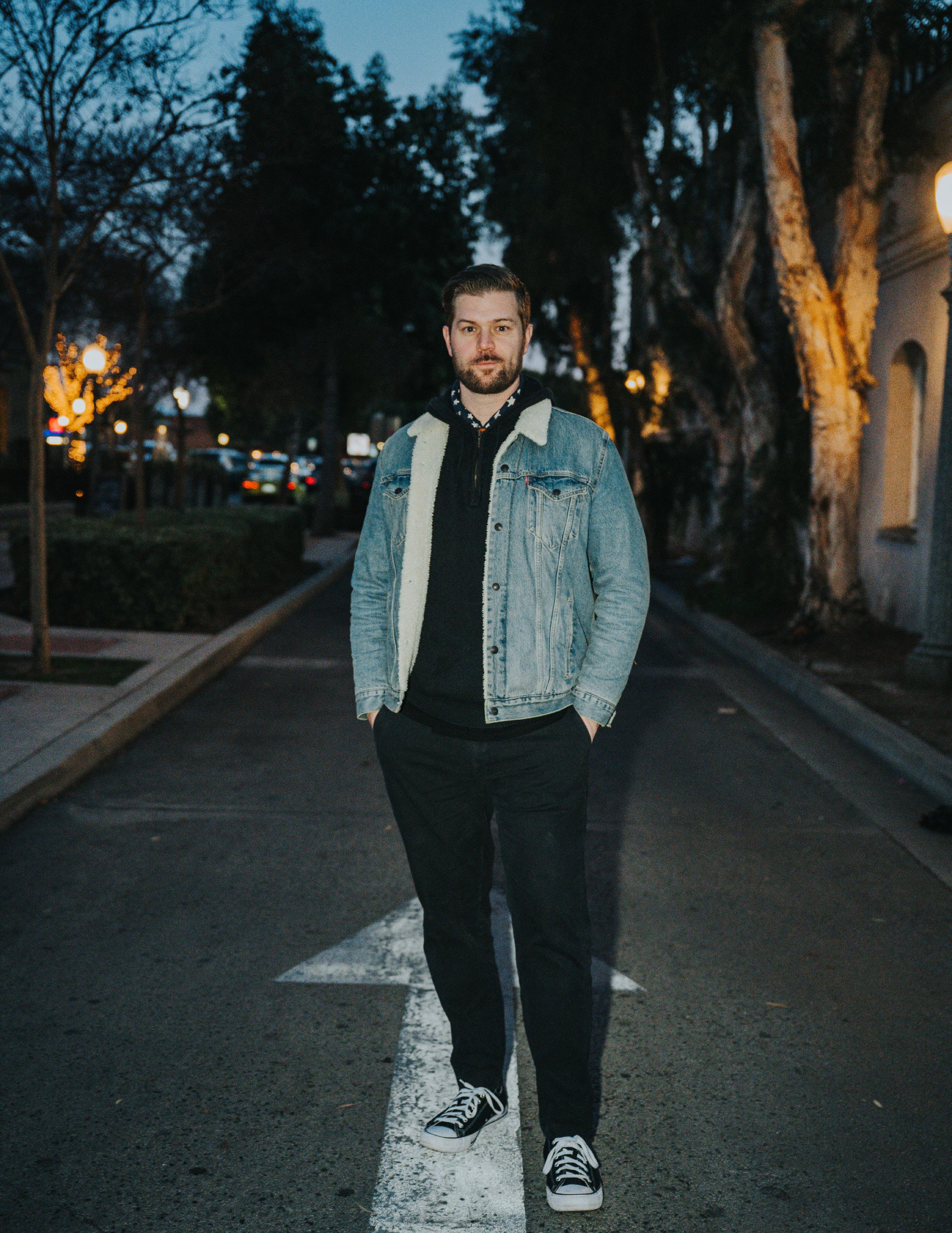
Amid the unpredictability of creative life, his mornings offer a moment of calm: a strong cup of coffee, a smoothie packed with fruit and greens, and a brief window to center himself before the whirlwind begins. At Orange County Sports & Entertainment, no two days look the same. One might be spent directing a high-profile photo shoot with Anaheim Ducks players; the next could involve shaping a full-scale campaign for a Vans collaboration, complete with skaters, custom shoes, and social rollouts—all requiring sharp vision, rapid coordination, and an ability to pivot on a dime.








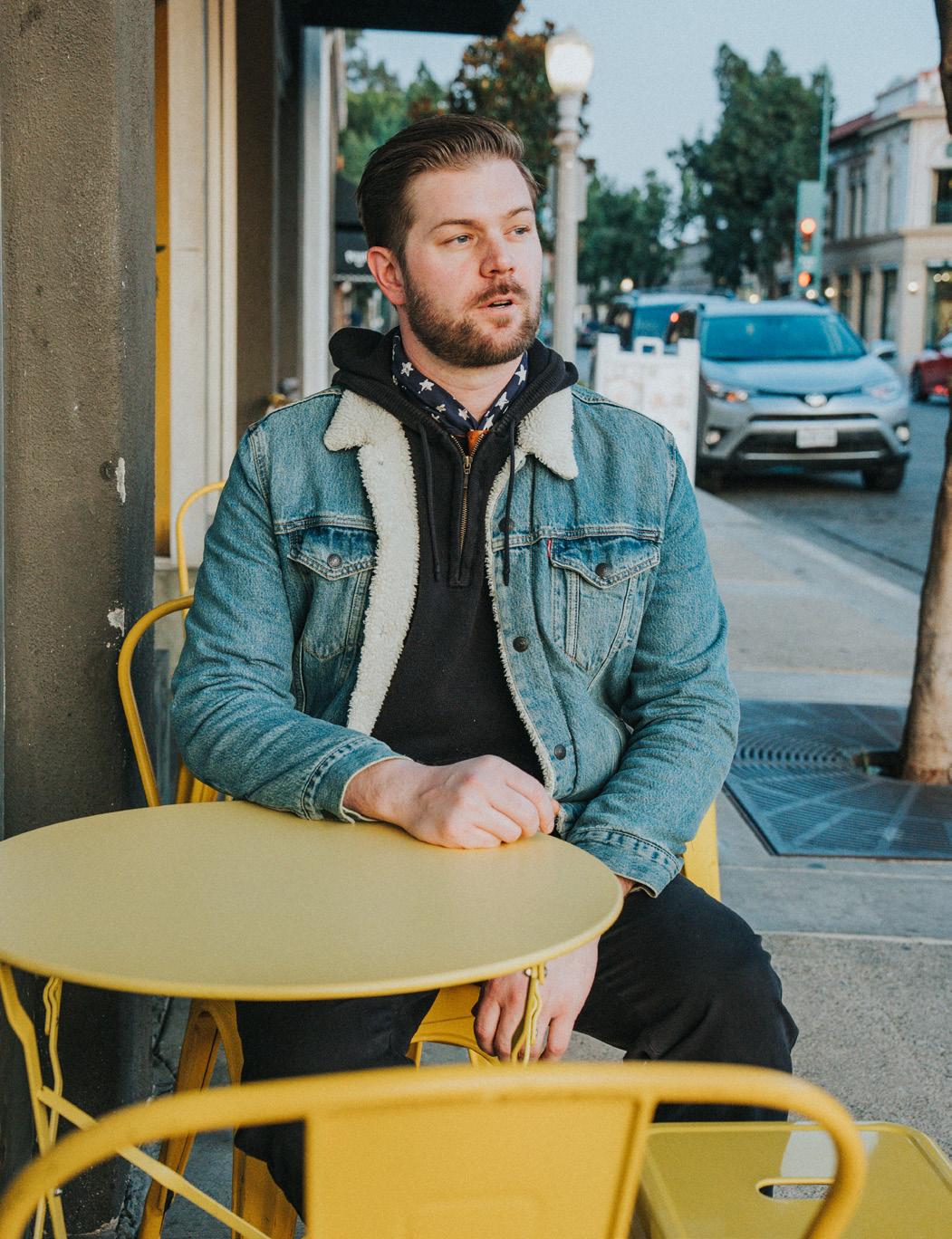










One of his most exciting long-term projects is OCVIBE, a massive $4 billion-dollar entertainment district currently being developed in Anaheim. With venues, hotels, restaurants, and a music hall larger than the House of Blues, it promises to reshape the cultural footprint of Orange County.
“There’s nothing like this here,” he says. “To be involved from the ground up—to help create a downtown for Orange County where art and community collide—is surreal.”
But even with a resume brimming with accolades, he’s still dreaming bigger. He hopes to one day write and direct a feature film based on his adoption story and the emotional reconnections that followed. There’s also the idea of writing a book. “I grew up with ADHD and could barely focus long enough to read,” he says. “Now I’m hooked. So maybe it’s time to write something of my own.”
When asked about the most fulfilling part of his journey, his answer is unexpectedly grounded.
“I used to think it would be a specific project—a moment that made me feel like I’d made it,” he says. “But it’s the in-between moments that matter most. Collaborating with friends. Hiring mentors. Sharing music with my Dad, who’s now retired and proud of what I’ve built.”
It’s not about the outcome anymore. It’s about the process— the messy, joyful, exhausting, invigorating process of creating something from nothing. “I’ve lived a few lives already,” he says with a smile. “And I hope I never take a second of it for granted.”




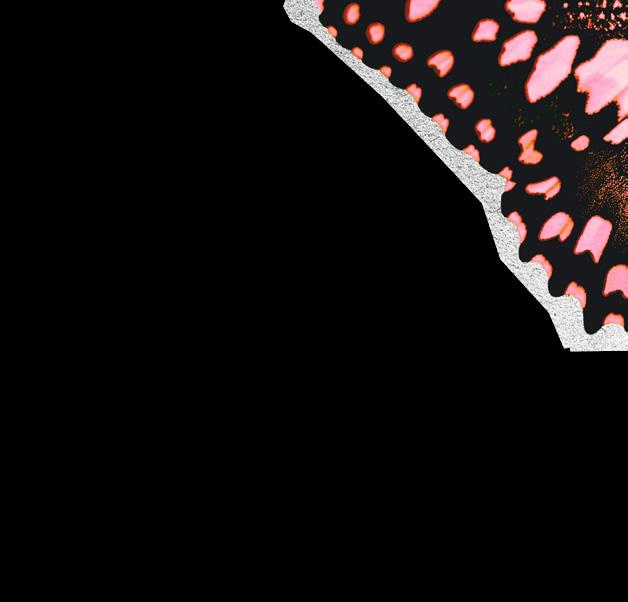




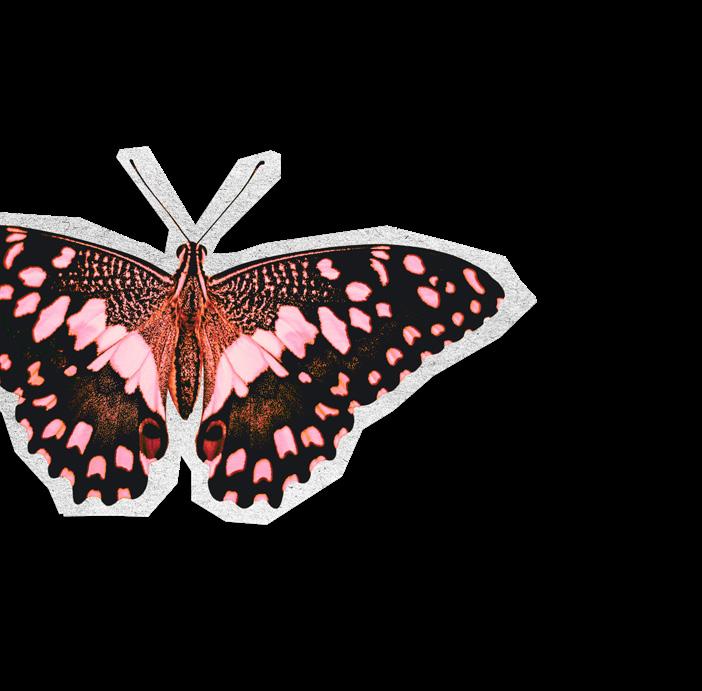

Bailey Spinn didn’t set out to go viral, she set out to be heard. “Music was always the goal,” she says. “Even when I was making silly videos in my room during COVID, I knew I wanted more than just internet fame.” With over 13 million TikTok followers and a billion views across platforms, she became one of the most recognizable faces in POV content. But now, with the release of her debut album LOSER, she’s shifting the spotlight. “People still try to call me an influencer first, but the second I put out a song, I was an artist,” she says. “I’ve been dedicated to this project for years, and the right people are finally starting to get it.”
The record is bold, emotional, and sonically all over the place in the best way. From heavy-hitting breakdowns to cinematic strings, LOSER is as unpredictable as Bailey’s journey, and she wouldn’t have it any other way. “I listen to basically every avenue of rock music,” she says. “I wanted this album to reflect how diverse my taste is and give a little bit of everything for everyone.”
Over the past year, Bailey’s been carving out her space as a musician, not just a creator with a mic. And for her, that meant going all in, from writing lyrics by hand in a fuzzy pink pen to confronting every troll who told her she didn’t belong. “It’s very Y2K,” she laughs. “But writing by hand helps me connect to what I’m feeling. I have enough time on my phone. This feels more personal.”





One of the most defining tracks on LOSER is “Front Row Psycho,” a fierce, full-throttle response to the early backlash Bailey faced as she stepped into music. “People were brutal,” she says. “I was still figuring out my sound and getting so much hate online. Instead of letting it get to me, I turned it into a song.” Raw and cathartic, the track channels that negativity into something loud, proud, and undeniably hers. “Some people said it was corny, but I don’t care. It’s exactly how I felt, and now it’s one of the songs fans connect to the most.”
That shift from being dismissed online to building a loyal fanbase didn’t happen overnight. For a long time, Bailey hesitated to post singing videos at all. “It wasn’t that I didn’t believe in myself,” she says. “I just didn’t want to invite criticism into something that meant so much to me.” But when she finally did, the reaction surprised her. “People were like, ‘Wait, why haven’t you been doing this?’ It made me realize I’d been the one holding myself back.”
While many of the tracks feel cathartic, the process behind them is deeply personal. “I don’t like making the same kind of song over and over,” she says. “Every session felt like a chance to try something new and figure out what feels the most like me.” That meant letting go of expectations and embracing experimentation. “I love pop punk, I love orchestral rock, I love the heavier stuff. I didn’t want to choose one sound. I just wanted to make what I actually enjoy.”







feel impossible. But over time, and with a few big stages under her belt, Bailey has found her rhythm. One of those moments came during her emo night performance at When We Were Young Festival in Las Vegas. “It was the biggest crowd I’ve ever played to—about 1,500 people—and I was nervous until I stepped onstage,” she says. “Then it felt right. I played one of my own songs and people were singing along. That was wild.”
The vulnerability in Bailey’s music is matched by her openness about her past. Having dealt with bullying throughout school, she’s made it her mission to be a safe space for others. “High school was really hard for me,” she says. “That kind of stuff doesn’t go away. And now, with the internet, it can be even worse. I want my fans to feel like they belong here. That’s always been the goal.”






Bailey’s not afraid to own her identity—onstage, online, or in her everyday life. Her aesthetic, much like her sound, has evolved. The blonde hair is gone, replaced by darker tones, piercings, and spikes. “I’ve always been alternative,” she says. “But now my music and my look finally match how I actually feel.”
She’s already experimenting with what’s next, but she’s not rushing anything. “People keep asking when the next single’s coming,” she says. “And I’m like, can you let the album live for a second? Go stream it first. Then we’ll talk.”
Lately, she’s been writing nonstop, leaning into grittier textures and shoegaze influences. “Some of the new stuff feels like a totally different world. In a good way,” she says. “But I’m not forcing it. I want LOSER to have its moment before I move forward.”
If her younger self could see her now, Bailey knows exactly what she’d think. “She’d freak out,” she smiles. “I used to dream about being a YouTuber and a musician. And now I’ve done both. I think 15-year-old me would be a fan of who I’ve become.”

BPhoto and Interview: Heather Koepp
Wardrobe Stylist: Molly Apple
Hair Stylist: Jinju
Makeup Artist: Kris Jung





“Love is a superpower, not a weakness.” That line isn’t just a lyric, it’s DE’WAYNE’s mission statement. On his new album, June, the LA-based genre-blurring artist invites listeners into an era of emotional surrender, creative clarity, and fearless expression. “In rock music, it felt like you had to say things a certain way,” he says. “Guitars had to sound a certain way. You had to look a certain way. And I didn’t hear people speaking about how important love is, how sexy it can be.”
This record, equal parts sweaty falsettos and soft confessions, marks a new chapter for DE’WAYNE, who’s long been chipping away at expectations of genre, of masculinity, of how loud or tender a Black artist is allowed to be in rock music. The album’s namesake, June, is both a character and a concept. “She’s the divine feminine,” he explains. “But also real. I see her in my best friend. I see her in my mom. That’s when she stops being a muse and starts becoming a mirror.” She became a guiding presence throughout the songwriting process, helping DE’WAYNE unlock a different kind of strength, one rooted not in performance but in presence. “It helped me surrender,” he says. “Instead of thinking, ‘A man would say it like this,’ I thought, ‘Fuck all that. Let me speak from my heart.”
That heart is on full display in “Sundays,” a cinematic slow-burn rooted in childhood memories with his father. “We’d leave church, and he’d pick up stuff from homies’ cribs, and I was like 13, rolling weed for him in the car. It sounds wild, but it was sacred time with my dad,” he recalls. “He’s my hero. And I wanted that story to live in this space, in rock music. There’s only like ten of us making rock music right now,” he laughs. “But I hope in a few years, there’s a million Black artists making rock. That’s what this song is for.”
Throughout the album, DE’WAYNE explores his identity and how both his upbringing and his process of unlearning have shaped him. “I grew up in the South.

Church. Patriarchy. I had to shift how I listen, how I care, how I show up. That’s a daily walk,” he says. “Before, I’d walk into a room with my head down. I’d dim my joy. But now, I’m trying to channel the part of me that’s full of light, energy, and love. I don’t want to lie to myself anymore.”
The emotional impact of the record is matched by its sonic evolution. With the help of producer Dylan Bauld and songwriter Brandon Colbein, June explores new territory that blends elements of Prince, Parliament Funkadelic, Springsteen, and DE’WAYNE’s own Houston-rooted soul. “I’d never created anything like this before,” he says. “Neither had Dylan. But when we made ‘Sundays’ on the first day, I knew we had something special.”
That something didn’t just sound different; it felt different. “Working with them was therapy,” he says. “I don’t make music with people unless I care about them. It’s not just about the track; it’s about community. It’s about calling them when I’m sad, or drunk, or excited. That’s the only way I can work now.”






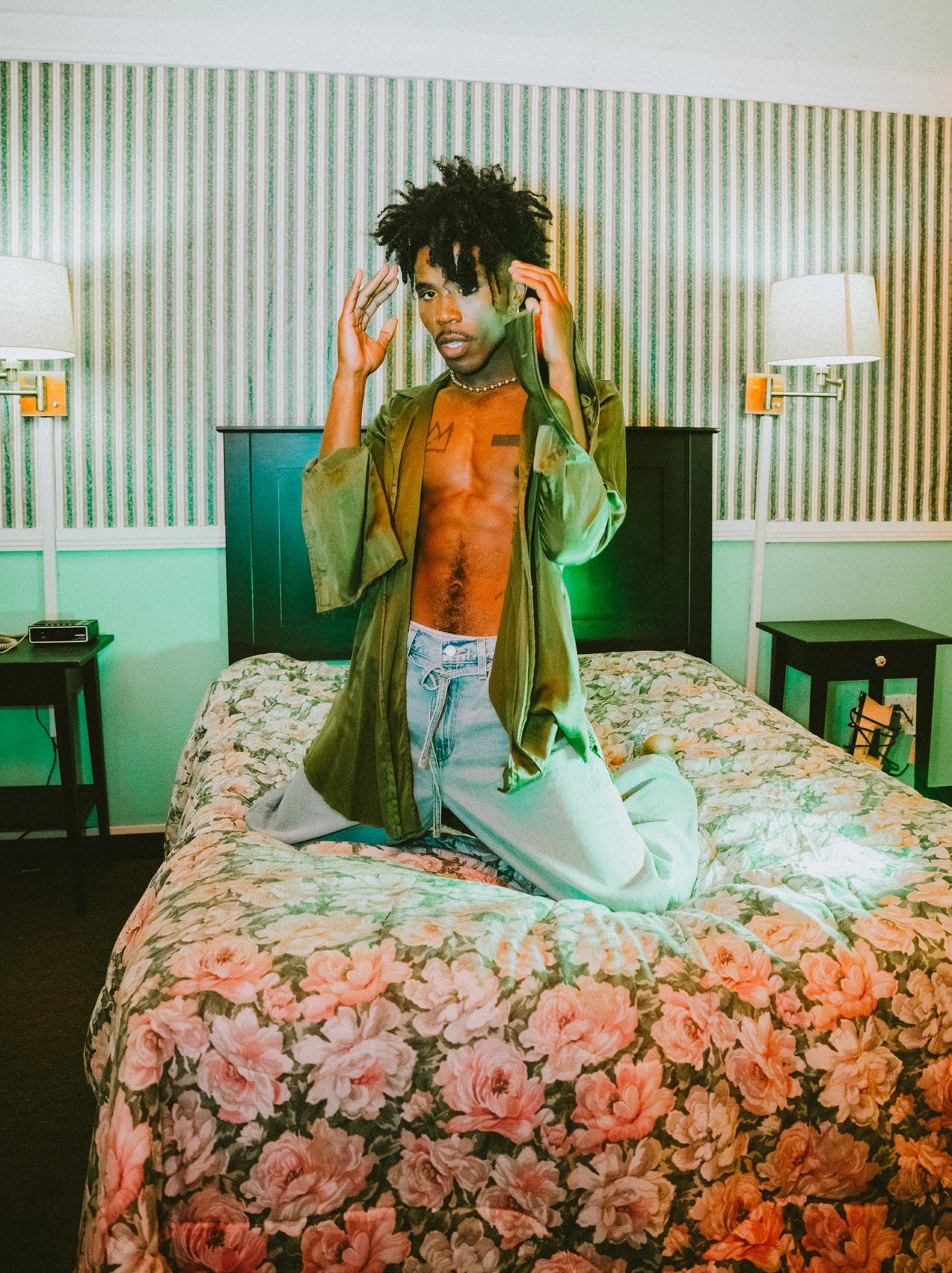







Even the delivery feels reborn. Theatricality has always been part of DE’WAYNE’s DNA, but now it feels less like performance and more like a full-body release. “Falsettos, whispers, shouts, it’s just who I am. I get on stage and go crazy because that’s me showing up for myself. I’m not holding anything back.”
“I’ve always played the background. Coming to LA, being a late bloomer musically… I wasn’t used to owning my light,” he admits. “But this album helped me step into my power. And now I have to go tell millions of people about it. People who don’t know who I am, and maybe don’t care to. That takes leadership. And I’m still growing into that.”
When asked what he hopes fans carry with them after listening to June, DE’WAYNE doesn’t hesitate. “I hope they chase their dreams. I hope they fall in love. And even if it breaks their heart, I hope it teaches them something about themselves. Because love—even the hard kind—helps you grow. It helped me grow. And if I can sprinkle just a little joy into someone’s day with this record, that’s everything.”





















Interview
Photos: Heather Koepp
Sometimes, finding your way forward means going back to where it all started.
For Grayscale, that place wasn’t a metaphor. It was the same basement where they first learned how to be a band. That space became the heartbeat of their new album, The Hart, an unfiltered, emotionally charged body of work that strips everything down to the core.
“We made a really deliberate effort to write it like we did early on,” says frontman Collin Walsh. “We recorded it as a band, we wrote it as a band, like an old-school rock band.”
Four musicians in a room, playing until it felt right.


“We didn’t use a ton of equipment,” Collin explains.
“Everything wasn’t perfectly tuned or on timed. But that pushed us to perform better. It forced more of us into the songs.” And that’s exactly the point. The Hart doesn’t try to be flawless. It’s not interested in perfection. It’s interested in truth.
Across its twelve tracks, the album explores grief, addiction, faith, and identity. These are some of the heaviest topics the band has ever touched, but they approach them with clarity, not chaos. “I’ve never been great at talking about my emotions,” Collin says. “Writing has always been the way I process them. There’s something grounding about it. Like, if I can get it into a song, I can understand it.”
One track quickly rose to the surface and shaped everything that followed. “‘Not Afraid to Die’ was the first song that made it all click,” Collin says. “As soon as we listened back, we knew this is it. This is the sound and the feeling we’ve been chasing.”

That song became the North Star for the rest of the album, guiding the tone and intention of everything that came after.
But Grayscale didn’t just reconnect with their sound on this album. They reconnected with each other. “We’ve been best friends since we were like 13 or 14,” Collin says. “We’ve been through breakups, loss, family stuff, growing up, real life. That kind of history makes everything stronger, especially the music.”
That kind of bond shows up in the way they create too. “We’re harsh but supportive,” he laughs. “There’s no ego. We’ve known each other so long that we can say, ‘That part sucks,’ and no one takes it personally. We’re all just trying to make the best thing possible.” It helps that they actually enjoy spending time together. “We’re around each other constantly, even when we’re not writing,” Collin says. “Video games, the gym, hiking, whatever keeps us grounded and keeps it fun. That’s part of the process too.”




This summer, that connection will be on display once again as the band heads out on tour with Our Last Night, followed by their first-ever UK and Europe headlining tour in November. Coming off their spring run with Mayday Parade, it’s a season of full-circle moments and meaningful firsts.
“Our Last Night is a much heavier band, and we’re not,” Collin says. “So I think it’s going to be a cool contrast. We bring something a little more emotional. A little more rooted in feeling than flash.”

That contrast is where Grayscale thrives. They’ve never tried to out-heavy anyone. They’ve never tried to fit into a box. Instead, they’ve built something personal and intentional over more than a decade together.
Looking back, Collin says he thinks their younger selves would be proud. “This record pulls from all the best parts of what we’ve done before, but now we know who we are. We’re more confident, more focused. And we’re finally able to do it the way we always wanted to.”



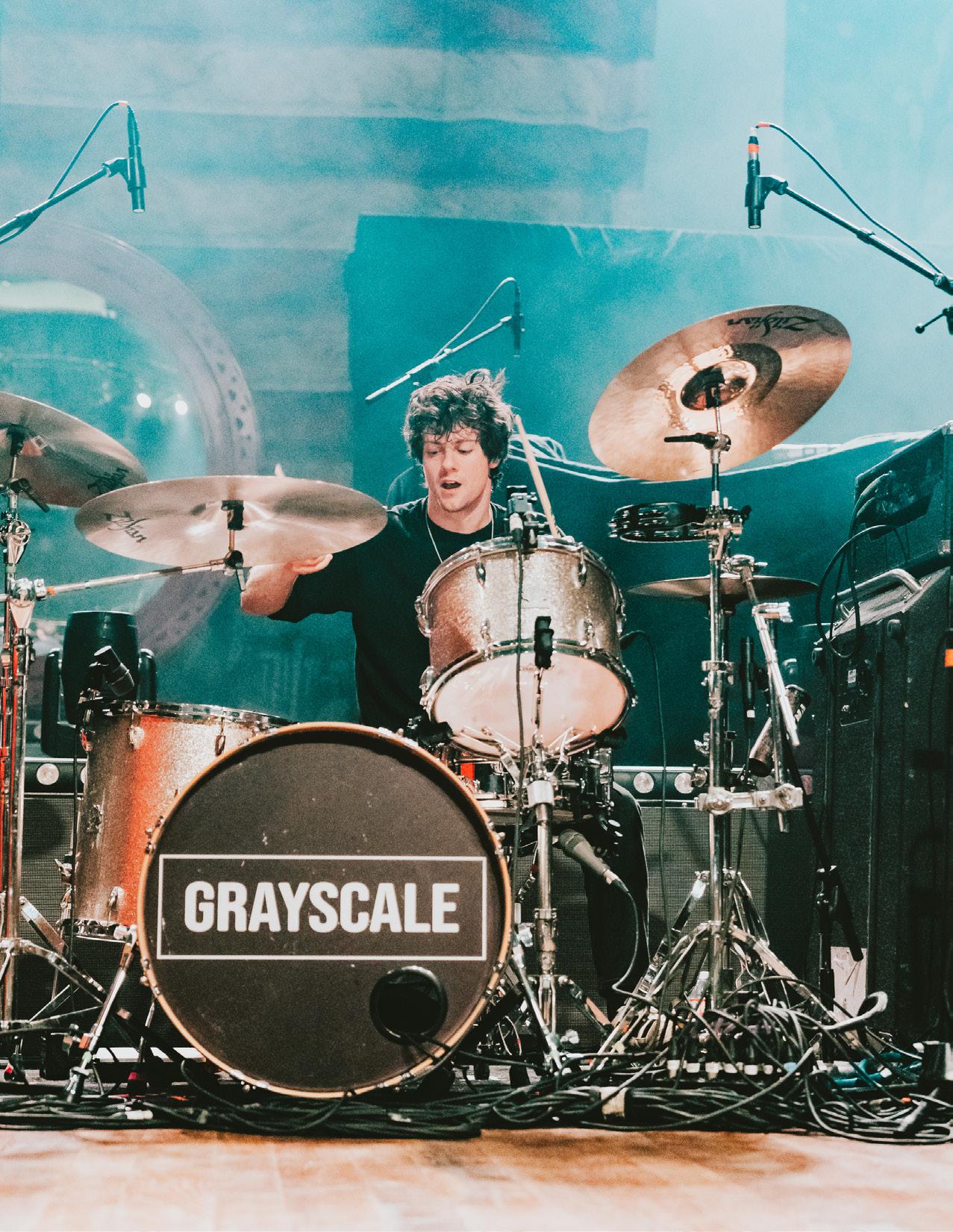











For anyone discovering them for the first time, Collin doesn’t hesitate. “Start with ‘Not Afraid to Die.’ It says everything about who we are right now.”
This new chapter doesn’t feel like a reinvention. It feels like a band coming home to themselves. No gloss. No filter. Just a group of friends who still believe in what they’re building.
If you haven’t seen them live, now is the time. Between their summer run with Our Last Night and their fall headlining tour overseas, Grayscale is bringing The Hart to the stage the way it was meant to be heard. Loud, honest, and full of heart.



Interview and Photos:
Heather Koepp
After nearly two decades in the industry, La Roux is no stranger to transformation. With a sonic signature that helped define a generation of electropop in the late 2000s, she’s now setting out to redefine not just her sound — but her story. In an intimate conversation, the artist behind hits like “Bulletproof” and “In for the Kill” lays bare the emotional and artistic journey behind her upcoming album — one she wrote, produced, and arranged entirely on her own.
Though this isn’t the first time she’s helmed her own production, La Roux is making sure it’s the first time

the world listens. “This is something I’ve wanted to talk about for years,” she says, frustration and pride equally present in her voice. Despite crafting the vast majority of her music — down to the tiniest hi-hat and shaker — she’s long battled an industry reflexively eager to credit male collaborators. “People are always asking, ‘Who produced your record?’ And I’m like, ‘Me.’ But nobody hears that. It’s like they just can’t imagine a woman doing all of it.”
This album, she asserts, is a reclamation — not just of authorship, but of authenticity. Working in solitude at home, she intentionally limited outside influence. Even the rare assistance, like a friend helping record vocals, is scrutinized for fear it’ll be misrepresented. “I’ve even been scared to credit people for tiny jobs because they get credited with the whole record.”
Her desire for total creative control stems not from ego, but from a need to correct the record. “There’s a reason all my records sound like La Roux,” she says. “It’s because it’s always been me.”

The new material reflects a different kind of boldness — less synthpop armor, more unguarded groove. Tracks like “Cabin Fever” and “Babyline” mark a deliberate stylistic pivot. There are nods to ‘90s and early 2000s R&B and hip hop — genres she loved in her youth but hadn’t yet incorporated into her official discography. “I knew I was going to let myself go down a more hip hop, R&Breferenced route,” she says. “But whatever I do, it still comes out sounding like La Roux.”
This personal liberation extends beyond sound. She describes shedding the performative distance of her earlier career, no longer putting on “the La Roux guise.” Where once she hid behind stagewear — even wearing velvet slippers in the forest rather than break character — she now seeks congruence between her onstage self and real life. “I feel like this is the most natural version of myself I’ve ever put out there.”
And while her visuals have always leaned unconventional, she’s keenly aware of how image can become a trap. “If I stayed like electro-synth-pop Elly with the quiff, I’d be doing that forever,” she reflects. “You either change right now, or you don’t change at all.”







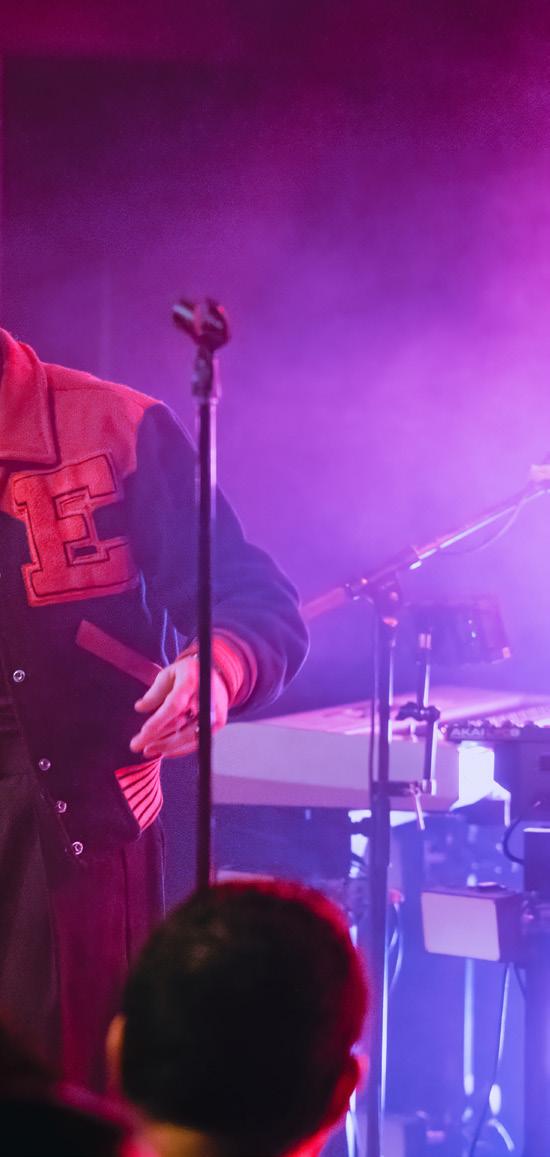

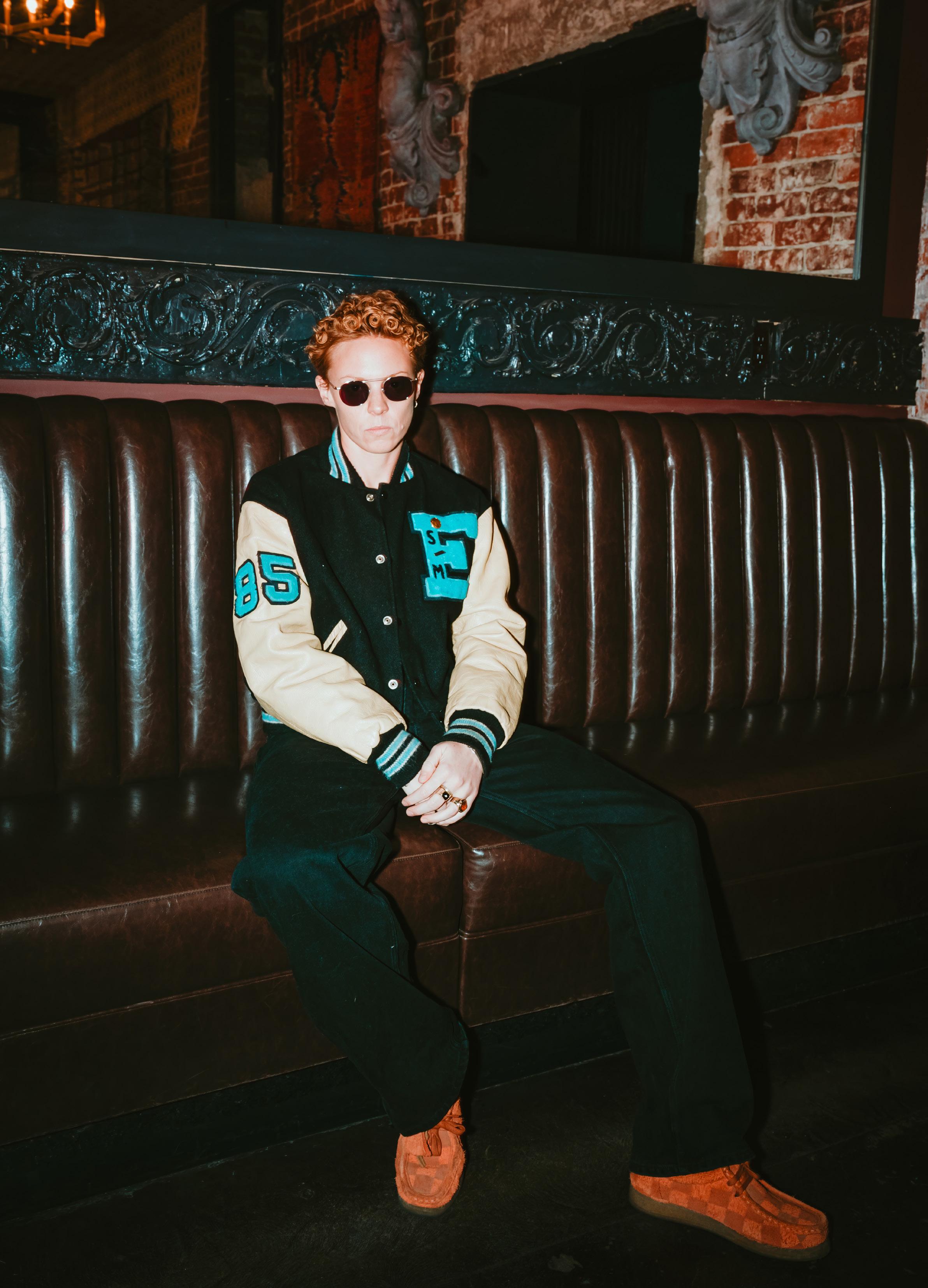





Fittingly, the new era begins not with a major festival or high-profile tour, but with an intimate residency in Los Angeles — a city whose culture and music pulse through the DNA of her new record. “Everything about this record is American,” she says. “All the references are R&B and hip hop. It just made sense to launch it here.”
Still, fans across the globe won’t be left waiting for long. “We will take the show on the road,” she confirms, hinting at new tour dates post-release. Until then, she’s letting the music do the talking — and the teasing. “There are Easter eggs out there,” she smirks. “Lyrics, song titles, little clues. People are smart.”
Looking back on her breakout era, La Roux doesn’t deny its impact — but she’s also not interested in nostalgia. “She’s mostly gone,” she says of her 2009 self. “That was a scared child. But I’m not scared anymore.”
With this new chapter, La Roux isn’t just making music. She’s making a statement — about autonomy, evolution, and the power of finally being seen for who you truly are.



It all started as “bar room talk”—the kind of idea that sounds lofty over a pint but rarely makes it past last call. But for co-founders Danny Marty Ray and Ben Pritchard, that casual conversation turned into something much bigger: BSB TV, a fast-growing music discovery platform spotlighting the best in rock, punk, metal, and alternative scenes.
The two first connected through Hometown Festival, an independent event Danny originally ran solo before partnering with Ben. At the time, Ben was working for another publication and recalls being handed “hundreds—hundreds of bands to listen to” as part of the festival’s curation process. What began as work quickly became something more.
“We struck up a good friendship from just kind of listening to bands and chatting, really,” Ben says.
“We spent hours doing it.”
The idea for BSB TV officially clicked into place one night after a live Q&A with Thomas Nicholas—yes, that Thomas Nicholas, the actor from American Pie turned full-time musician making waves in the alt scene. “While we were sitting there at the bar after this Q&A,” Ben remembers, “we were just discussing ideas of what could happen, really.”
“We were talking about the music industry—the strengths of it, the weaknesses, and the things we thought were missing,” Danny adds. “We turned onto the topic of music videos… and how it was really cool that you could get your video played on Scuzz or Kerrang or MTV, but the one thing that was gutting was you didn’t get to see the real-time response from the people watching.”
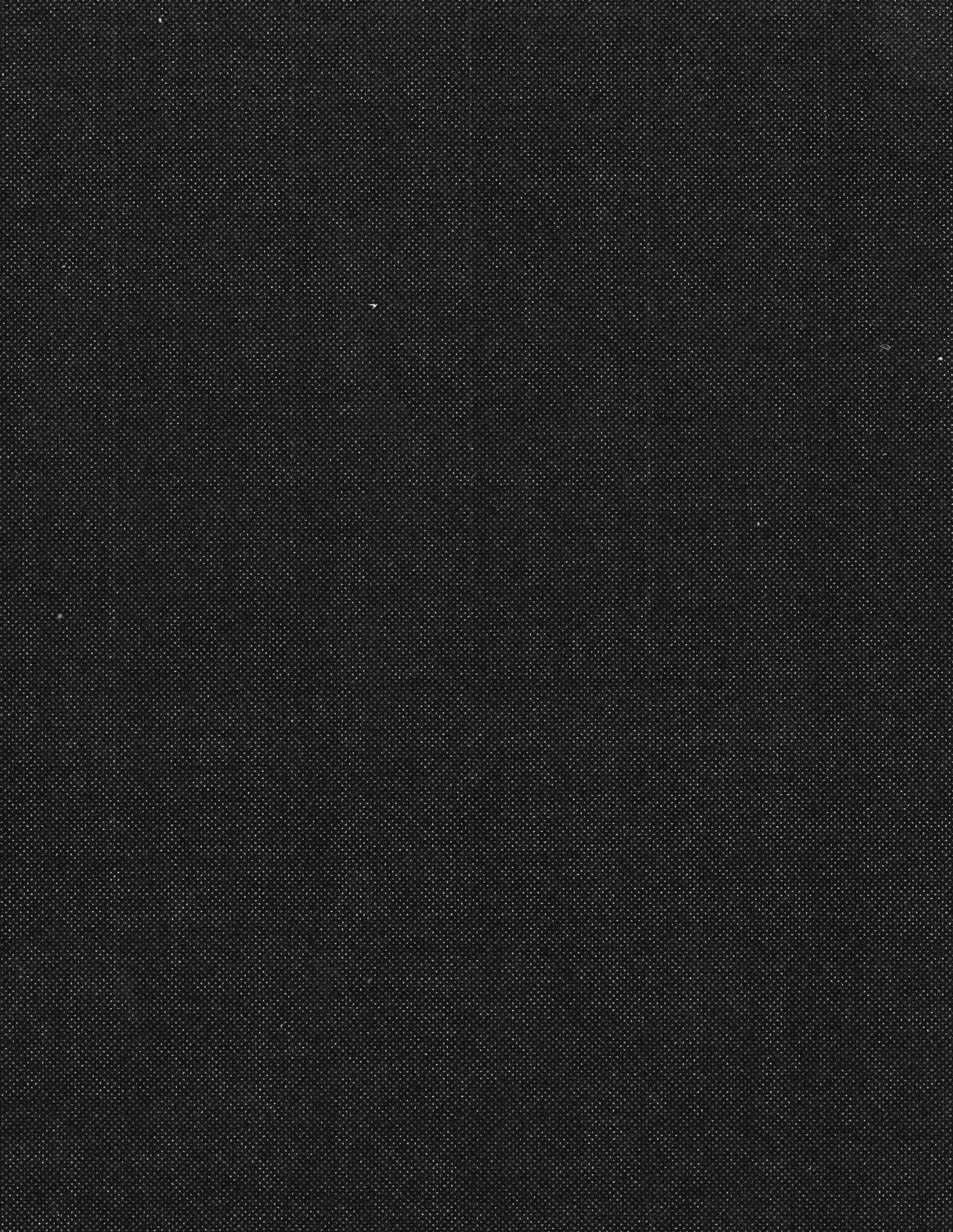
That lack of connection—that broken feedback loop—became the foundation for BSB TV.
BSB TV isn’t just a throwback to the music television era—it’s a reimagining of what that format can be today. Instead of passive viewing, the platform offers an immersive experience where fans watch curated music videos and weigh in live, sparking a real-time conversation between audience, artist, and industry. “We started talking about whether there could be a platform that lets people actually join in—an interactive, engaged live chat where they could provide that feedback,” Danny recalls.
But they didn’t stop at fan interaction. From the outset, the mission was to create something that could genuinely move the needle for emerging artists. Each week, BSB TV invites a special guest from the industry—festival bookers, label heads, radio DJs, or legacy musicians—people who, as Danny puts it, “have the traction, the ability, and the status to help elevate any of the artists and bands that would pass through the BSB TV ecosystem.” It’s part discovery show, part industry pipeline—and entirely community-driven.
“It’s a two-way bridge,” Danny explains. “It gives audiences a place to share their voices in real time, while also creating direct access for emerging artists to connect with the industry power players who can open doors and shape careers.”
That sense of access and accountability is central to what makes BSB TV different. “There’s so much gatekeeping that goes on in the music industry,” Danny continues. “I’ve been to shows and asked someone to check out a band, and that artist or manager has said, ‘No, they don’t want to. They haven’t got time.’” With BSB TV, those decisionmakers are brought directly into the fold—and so are the fans.
Each episode of BSB TV follows a structured format: a rotation of handpicked music videos, a live audience chat running throughout, and a guest expert offering commentary, critique, and—when the chemistry’s right—industry opportunity. Artists
featured on the show don’t just get exposure; they get real-time validation and visibility that can translate into bookings, label interest, and momentum. “It’s not just about being seen,” Ben notes. “It’s about being heard—by people who can actually change the trajectory of your career.”
The submission process is intentionally open and democratic. BSB TV receives dozens of video submissions weekly, and the team personally reviews each one—no bots, no algorithms, no payto-play politics. “It might take hours, but we listen to everything,” Danny says. “The music deserves that.” The selected artists are announced ahead of the weekly livestream, giving fans and the bands themselves time to rally and tune in.
In a landscape where algorithms often overshadow artistry, and access is still too often controlled by a select few, BSB TV is rewriting the rules. It invites everyone—fans, artists, and tastemakers—into the same room, into the same conversation.
“This was a place where we could bring everyone into a specific space,” Danny says. A space where feedback isn’t filtered through PR teams or buried in analytics, but shared instantly and honestly. A space where new talent isn’t lost in an inbox or overlooked in a Spotify queue, but given a spotlight—and a shot. By building something grounded in connection rather than clout, BSB TV is giving power back to the people who make music matter: the artists who create it, the fans who champion it, and the believers who want to help it grow. No gatekeepers. No guesswork. Just great music, real voices, and an open channel between the underground and the next big thing.
And if this is just the beginning, then the future of music discovery might finally sound like it belongs to all of us.
